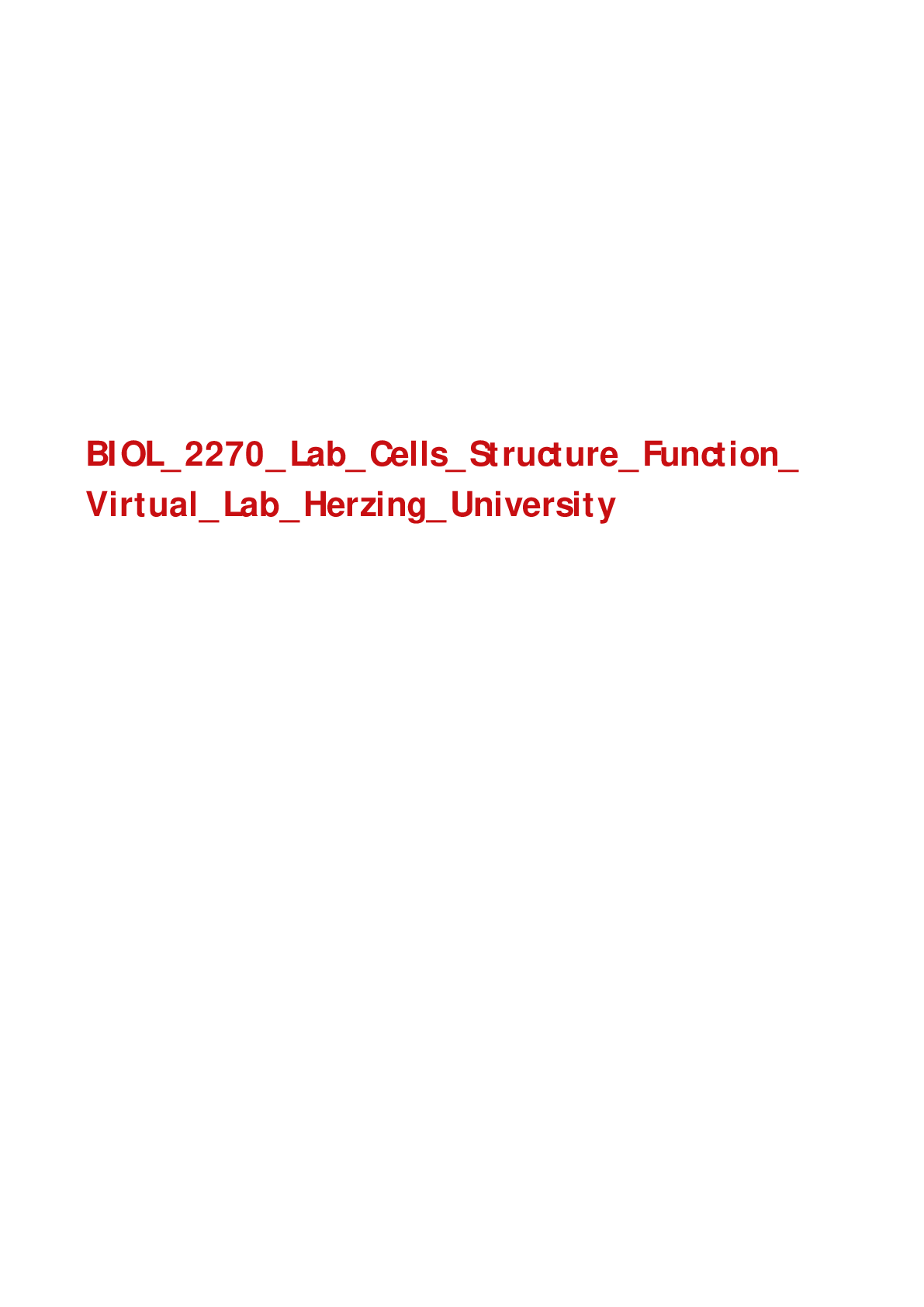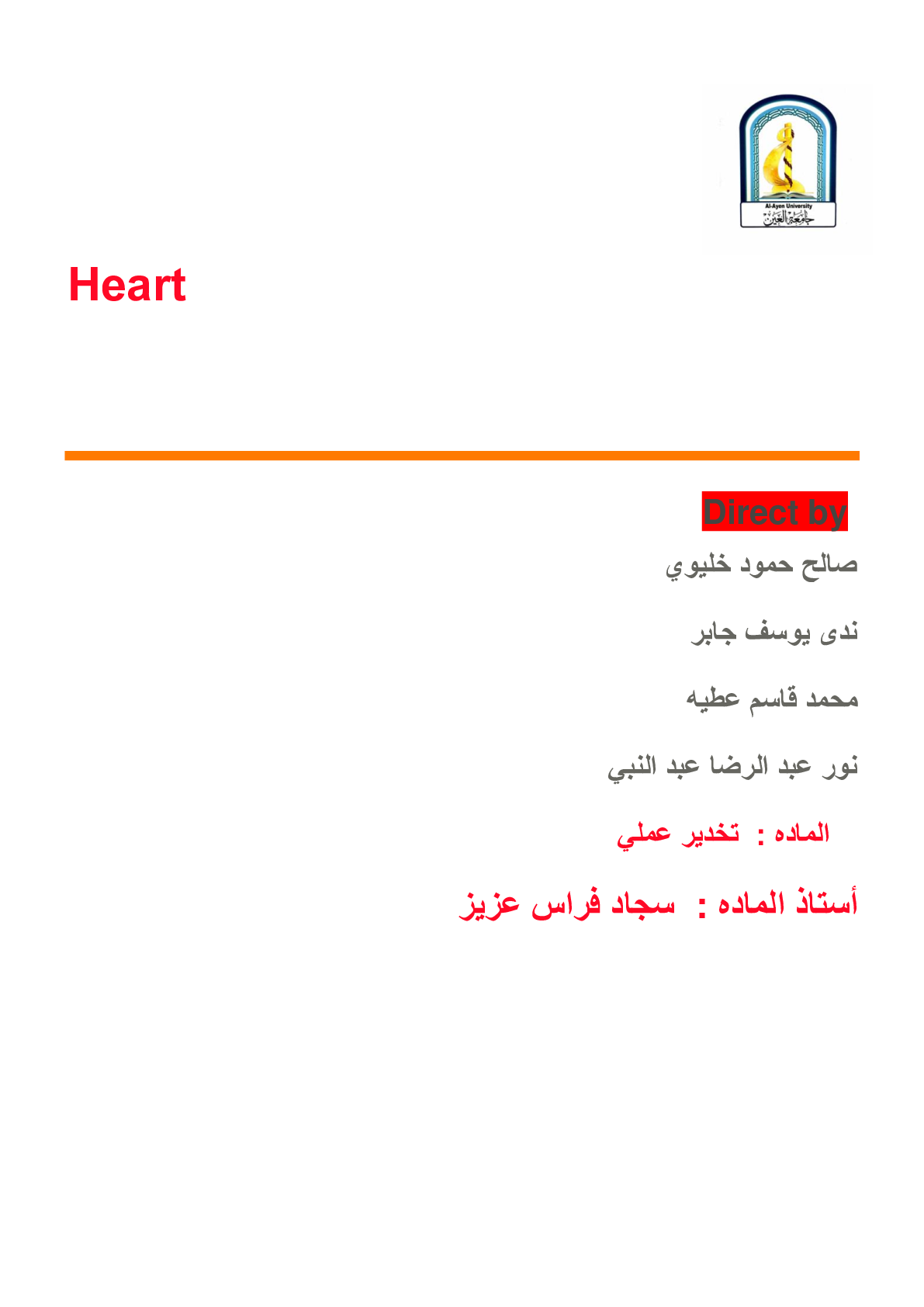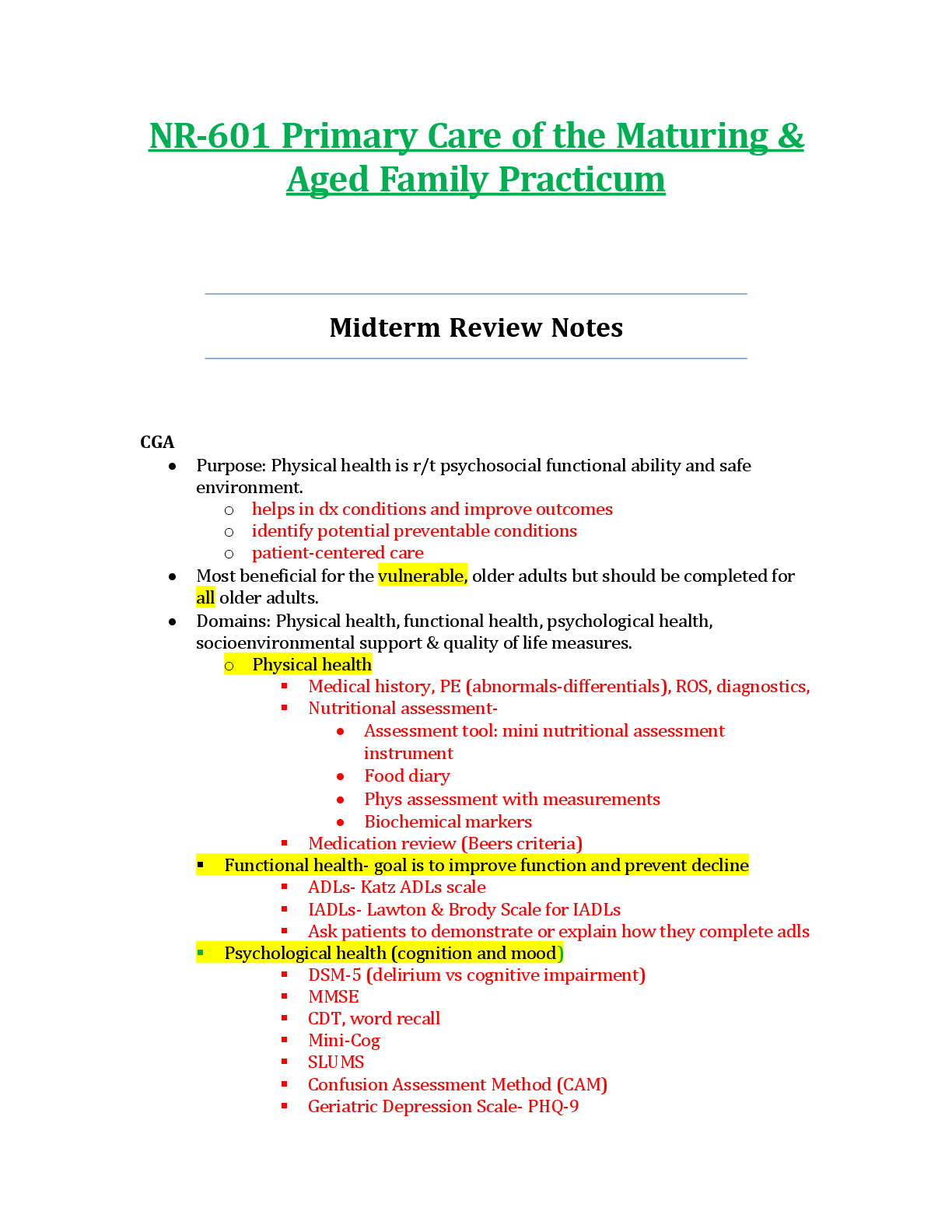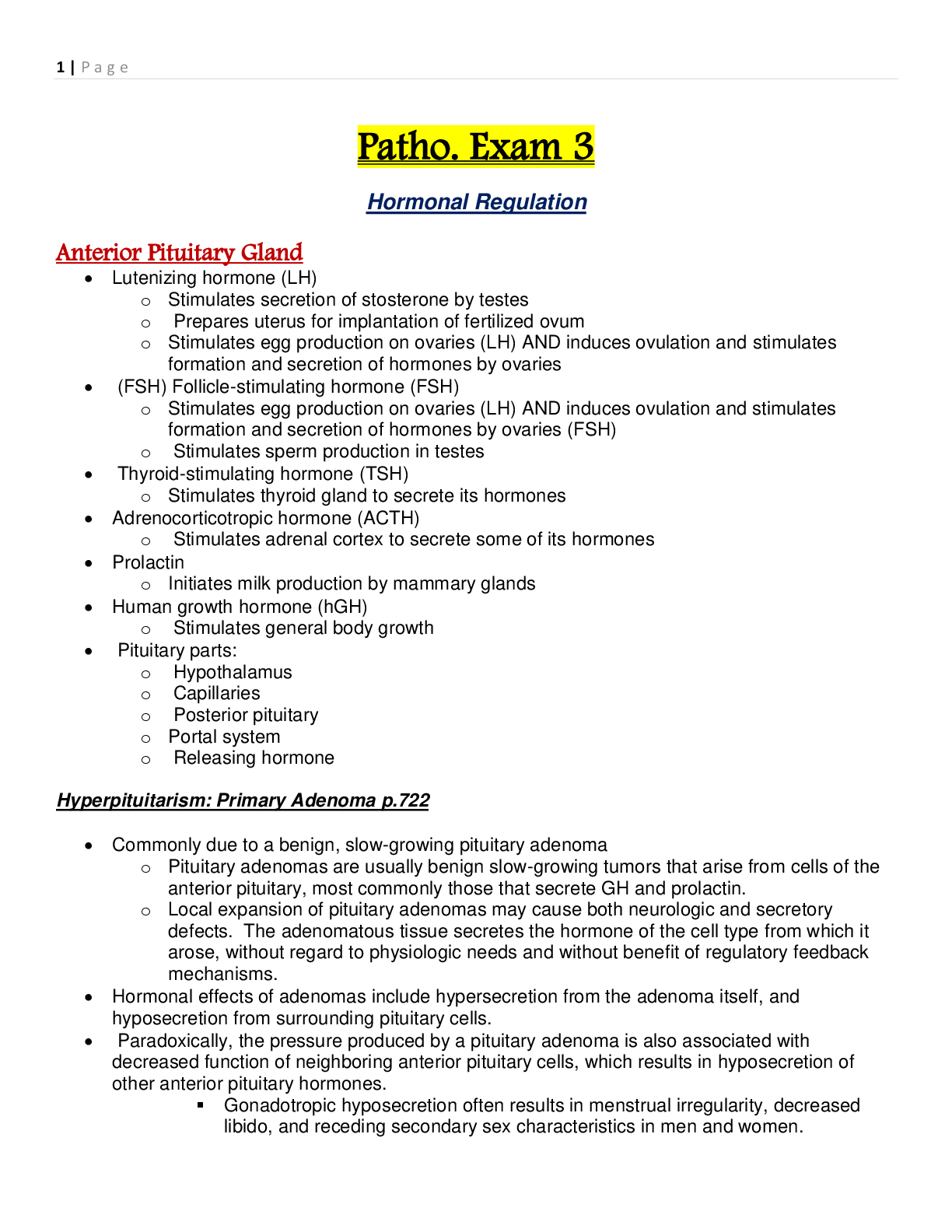Biology > Study Notes > Urinary System Lecture Notes Lecture notes on the urinary system (All)
Urinary System Lecture Notes Lecture notes on the urinary system
Document Content and Description Below
1. URINARY SYSTEM ORGANS a. Six Organs i. 2 - Kidneys ii. 2 - Ureters iii. 1 - Bladder iv. 1 - Uretha 2. FUNCTIONS OF THE KIDNEY (890) a. Eliminates Waste i. Blood Plasma ii. Separates waste ... from useful chemicals iii. Returns useful substances to blood b. Regulate Blood Volume and Pressure i. By eliminating or conserving water c. Regulate the Osmolarity of Body Fluids i. By controlling the relative amounts of water and solutes eliminated 1. (electrolyte/water balance); ii. Regulates Acid/Base Balance (together with the lungs) d. Secretes i. Renin – enzyme which activates hormonal mechanisms that control blood pressure and electrolyte balance ii. Erythropoietin – a hormone which stimulates the production of red blood cells. iii. Calcitriol Synthesis – final step in synthesizing calcitriol which contributes to calcium homeostasis e. Gluconeogeneis from amino acids in extreme starvation 3. METABOLIC WASTES AND NITROGENOUS WASTES (890) a. Waste – any substance that is useless/toxic to the body or present in excess b. Metabolic Waste – waste substance produced by the body chemical reactions c. Nitrogenous Wastes i. Urea and ammonia 1. Proteins Amino Acids NH2 removed forms ammonia, liver converts to urea (less toxic) ii. Uric Acid – product of nucleic acid catabolism iii. Creatinine – product of creatine phosphate catabolism (muscle metabolism) 4. EXCRETION (891) a. Separation of wastes from body fluids and their elimination b. Four body systems carry out excretion i. Respiratory system 1. CO2 , small amounts of other gases and water ii. Integumentary system 1. Water, inorganic salts, lactic acid, urea in sweat. iii. Digestive System 1. Water, salts, CO2, lipids, bile pigments, cholesterol, other metabolic wastes, and food residue iv. Urinary System 1. Many metabolic wastes, toxins, drugs, hormones, salts, H+, and water 5. GROSS ANATOMY OF THE KIDNEY (892) a. Connective Tissue Coverings i. Renal fascia: 1. outermost – binds it to abdominal wall ii. Fat capsule 1. middle layer, cushions kidney and holds it in place iii. Fibrous capsule: 1. Encloses kidney protecting it from trauma and infection 2. Collagen fibers extend from fibrous capsule to renal fascia FiRberonuasl ccoarptesxule RReennaallmpeadpuillala AdRiepnoaslestiinsussue inRMeraenjnoaalrlpcseailnlvyuixss RReennaall pcyorlaumind Renal blood vessels b. Renal Cortex i. Renal Cortex (0uter) c. Renal Medulla i. Renal Medulla (Inner) d. Renal Pyramids, i. 6 – 10 with broad base facing cortex and renal papilla facing sinus (medulla) e. Renal Columns i. Extensions of the cortex that project inward toward sinus f. Papilla g. Renal Sinus – at the medial concave hilum i. Contains blood and lymphatic vessels, nerves, and urine-collecting structures ii. Adipose fills the remaining cavity and holds structure into place. h. Lobe of kidney i. One pyramid and its overlaying cortex i. Minor calyxes i. Cup that collects urine from each papilla j. Major calyxes i. Convergence of two or three minor calyces k. Renal pelvis i. Convergence of 2 or 3 major calyces l. Ureter i. A continuation of the pelvis that drains the urine down to the urinary bladder [Show More]
Last updated: 3 years ago
Preview 1 out of 17 pages
.png)
Buy this document to get the full access instantly
Instant Download Access after purchase
Buy NowInstant download
We Accept:

Reviews( 0 )
$8.50
Can't find what you want? Try our AI powered Search
Document information
Connected school, study & course
About the document
Uploaded On
Jun 01, 2021
Number of pages
17
Written in
All
Additional information
This document has been written for:
Uploaded
Jun 01, 2021
Downloads
0
Views
190

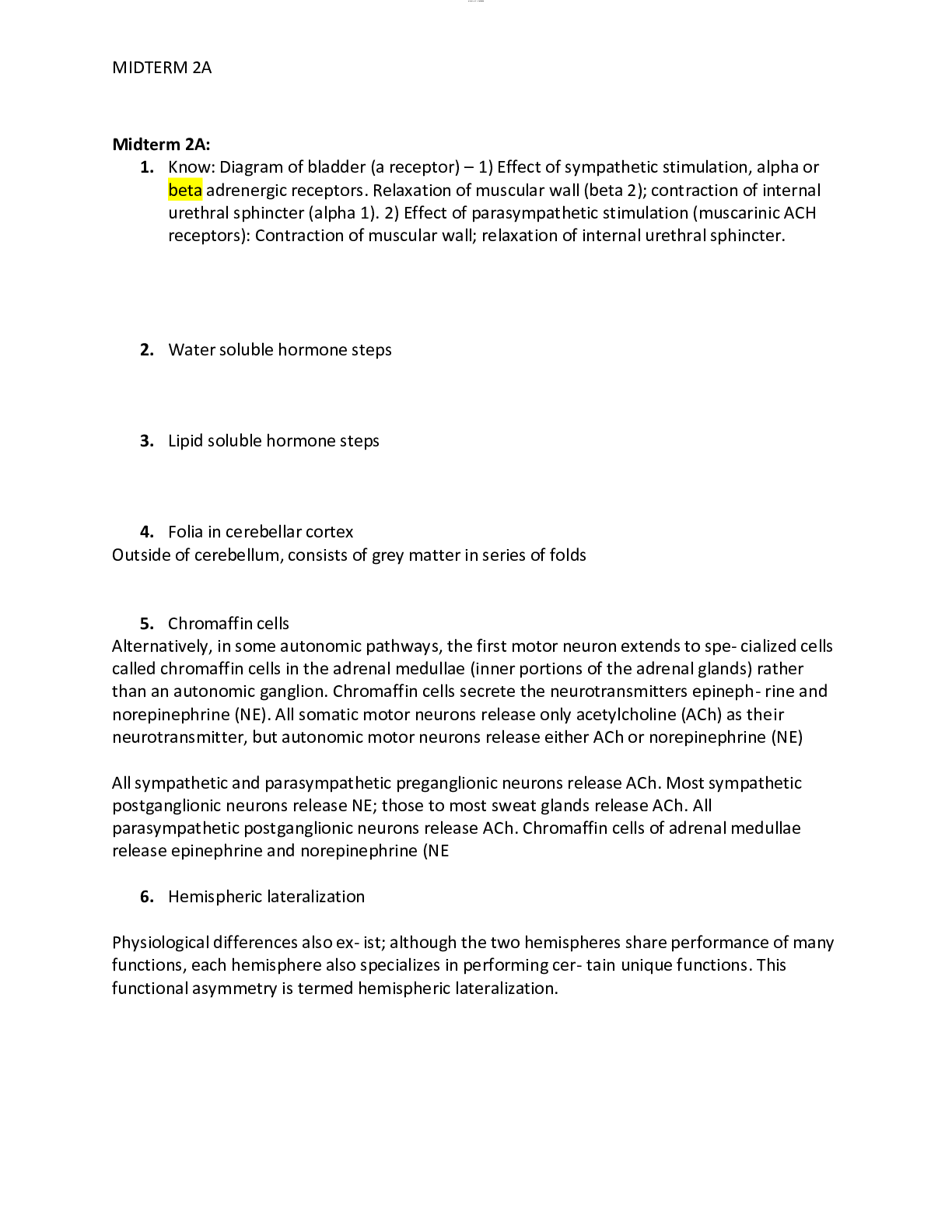
.png)


.png)











